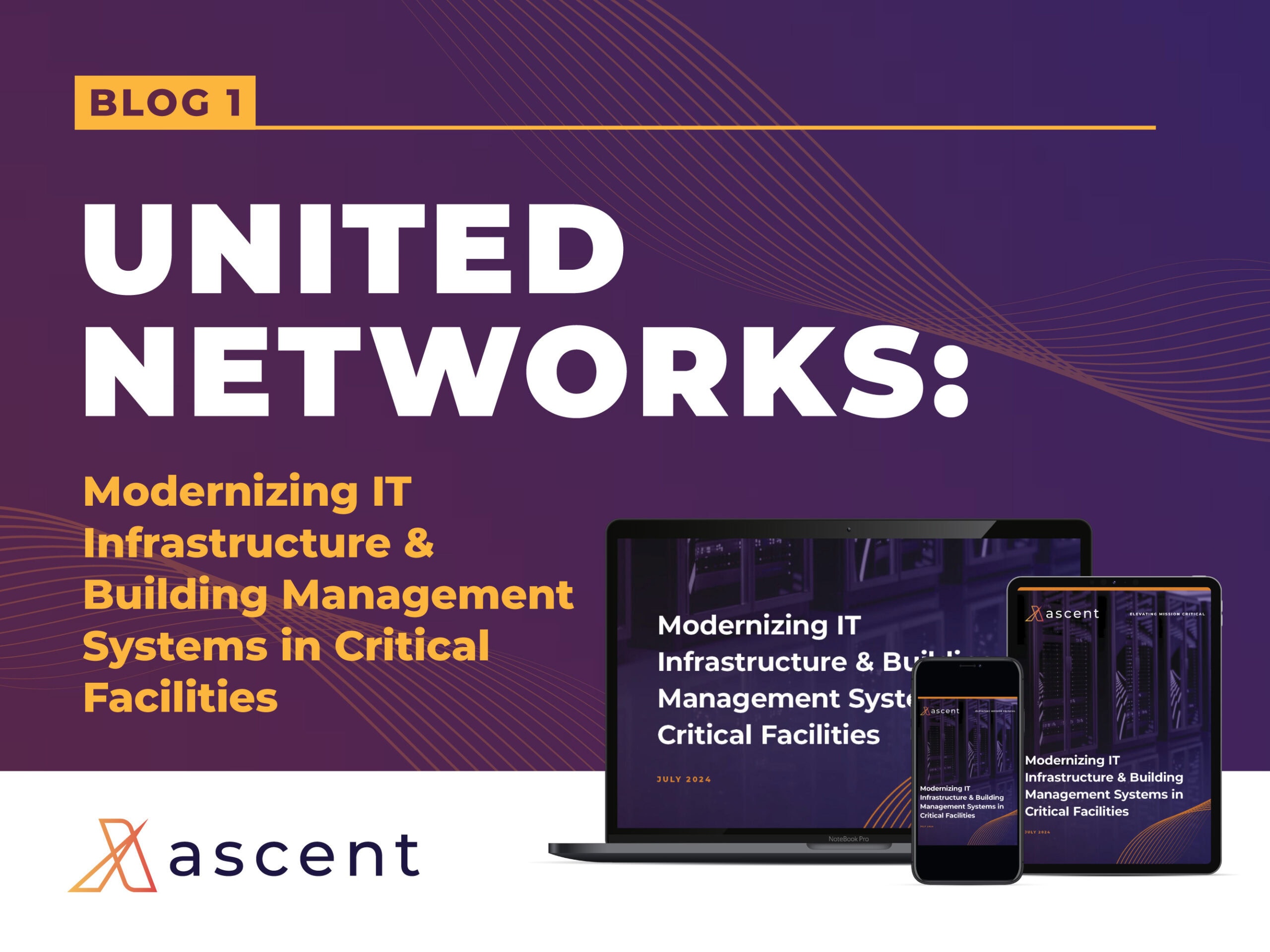Welcome to Ascent’s latest blog series, where we dive into the IT networks on which traditional data center building infrastructure operates. These are the mechanical, electrical, fire protection, and security systems, all of which run through digital controls and automation systems, that support mission critical computing inside data centers. Throughout this four-part series, we will address common challenges that arise when IT infrastructure and building infrastructure meet.
The ecosystem of mission critical facilities often features a patchwork of networks, each established by different subcontractors or specialized teams, that have the potential to result in fragmented and inefficient systems. This lack of cohesion extends to hardware and configuration standards, compounding complexity and impeding effective management and maintenance.
Diverse Networks, Siloed Systems
Building infrastructure in mission critical facilities, which encompasses everything from electrical to mechanical systems, typically operates on segregated IT networks. These networks, often set up by distinct subcontractors or specialized construction units, create isolated systems lacking interoperability.
For example, a typical facility might deploy separate networks for electrical, mechanical, fire safety, lighting, digital signage, security, office operations, and guest Wi-Fi. Each network may also rely on different technologies, exacerbating integration and management challenges.
Challenges of Network Fragmentation
Consider a recent hyperscale consolidation project that grappled with significant operational hurdles due to non-standardized network infrastructure. With over 90 network switches and 30 physical servers supporting various building control systems, seamless operation and maintenance became elusive.
The most glaring issues emerged in the electrical management software, which controlled multiple banks of electrical switchgear. Installed independently over several years, these systems operated in isolation without communication. The absence of standardized hardware, configuration and cybersecurity further compounded the challenges, underscoring the necessity of a unified management strategy.
Fragmented networks not only complicate management and maintenance but also heighten security risks and operational disruptions. Each network operates independently, making it challenging to monitor and manage interdependencies among systems.
The Risks of Non-Standardization
The absence of standardized hardware in mission-critical data center facilities poses risks that can impact reliability, efficiency, and maintenance. One of the primary concerns is compatibility issues among different hardware components from various manufacturers. This lack of uniformity can lead to challenges in integration and scalability, hindering the seamless operation of critical systems.
Without standardized hardware, troubleshooting and maintenance become complex tasks. Technicians may encounter difficulties in diagnosing and resolving issues promptly due to the diverse nature of equipment deployed. This can result in human error, increased downtime and potential disruptions to essential services.
Additionally, non-standardized hardware can impede effective resource management. It may limit the ability to optimize power consumption, cooling efficiency and overall space utilization within the data center environment.
Finally, the absence of standardization can impact security measures. Varying hardware configurations might introduce vulnerabilities that are harder to manage consistently across the infrastructure. This diversity can further complicate security patching and updates.
A Unified Approach to Infrastructure Management
To overcome these challenges, mission critical facilities must adopt a holistic approach to IT and infrastructure management. This involves consolidating disparate networks into a unified platform, standardizing hardware and configuration settings, and implementing robust cybersecurity measures.
By breaking down silos and promoting collaboration between IT and infrastructure teams, facilities can streamline operations, enhance security, and bolster resilience for scalability. This integrated strategy is crucial for maintaining efficiency and continuity in mission-critical environments.
For more informational insights into the convergence of mission critical facilities and enterprise IT operations, download our white paper, Modernizing IT Infrastructure & Building Management Systems in Critical Facilities.
